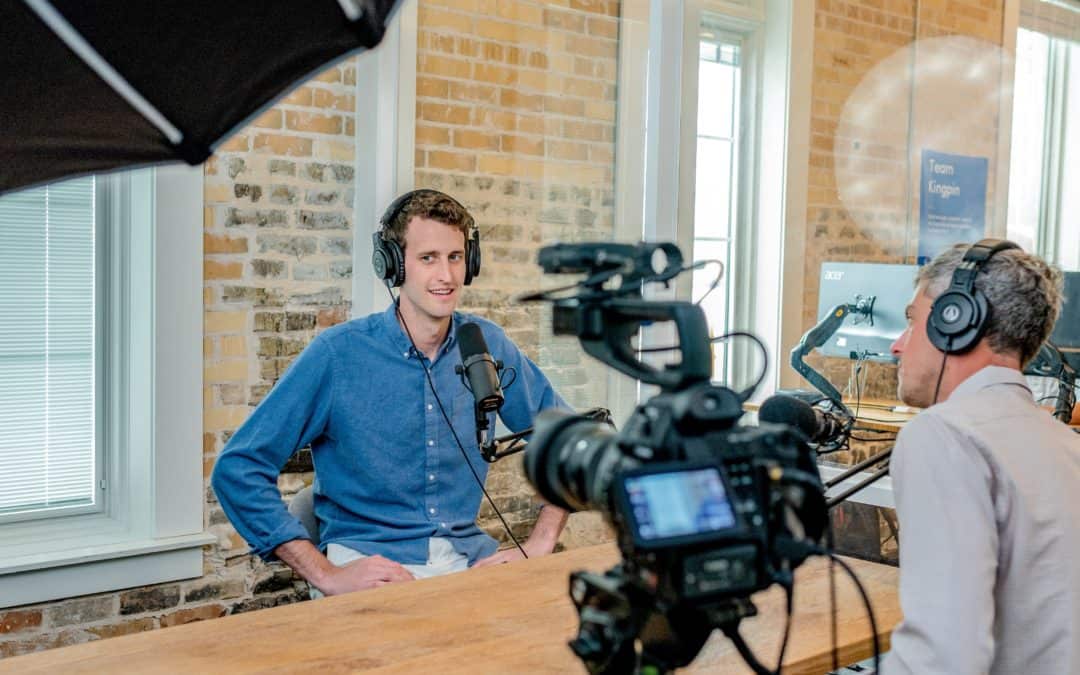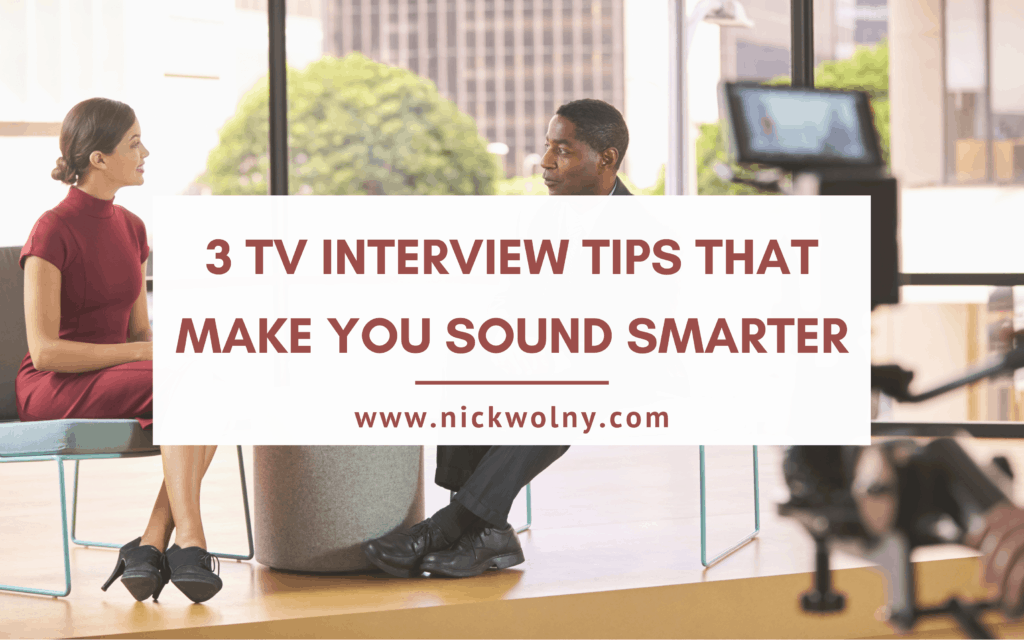3 TV INTERVIEW TIPS THAT MAKE YOU SOUND SMARTER

Looking for TV interview tips for an upcoming appearance?
Do you want to sound smart when cameras are on and the microphone goes live?
You may want to adopt a few TV interview tips publicists teach their clients to sound smarter and maximize airtime when they make an appearance.
Why small adjustments make a big difference
Having done over 40 live TV interviews on marketing and technology in the last 18 months, I can say with confidence my best interviews resulted from implementing small tweaks.
I’ve also sat in the TV station’s green room and watched very smart people – doctors, professors, entrepreneurs, and many other people wayyyy smarter than me – crash and burn because they did not adopt these tactics.
This is a shame, because their expertise improves the lives of the general public way more than me commenting on TikTok dances or Instagram design leaks. They didn’t have basic TV interview tips to help them keep the ball rolling.
It’s an interviewer’s job to keep the ball rolling and bring the charisma. To achieve this, some interviewers may zero in on details that stray from your core message.
Where these experts bomb is that they allow the interviewer to drive the majority of the interview, rather than smoothly shifting the conversation back into their wheelhouse.
It’s a quiet fail, and not a foot-in-mouth type of mistake.
If you have an upcoming interview (TV, podcast, or otherwise) and you want to sound smart, here are three tips used by professionals on live broadcasts day in and day out. They made a schmuck like me sound smart and they will work for you too!

TV interview tip #1: Use “blocking and bridging” to remain in charge
“Blocking and bridging” is an interview technique that helps you stay on-message during an interview when things begin to go off on a tangent.
In this technique, you will block the interviewer’s question — essentially not answering it — and bridge back to your core message.
Not answering an interviewer’s question gets a bad rap these days. But there may be multiple reasons you wouldn’t want to answer a question:
The question may fall outside your scope of expertise.
An interviewer may be angling for you to comment on the behavior of a competitor or something negative.
The question is off-topic, and your time on the air is limited, so you want to get back on topic sooner rather than later.
To block and bridge, respond to the question with transitional “bridge language” that puts you back in the driver’s seat.
Examples of bridge language would be
- “What’s more important is…”
- “From my perspective…”
- “Here’s an even more important question…”
- “What I know is that…”
Politicians often do an extreme version of blocking and bridging – they bridge back to their message again and again, and some almost never answer the questions they are asked.
It’s unlikely you’ll need to dodge an interviewer’s questions as much as a politician does, unless you are a public representative or are discussing a volatile topic.
To get the most out of your interview opportunity, consider memorizing a few “bridge language” transitions in case you find yourself painted into a corner.
TV interview tip #2: Memorize one or two industry statistics
You don’t need to be the one conducting industry research; you can sound smart just by being the messenger of compelling studies or statistics that people should know about.
Re-stated statistics and facts bring everyone in the room up to the same level in terms of being informed.
Then, you as the subject matter expert provide your opinion and interpretation of the data first; this one-two punch shows up as authoritative and compelling.
How can you find statistics? I do a Google search for what I’m looking for along with the word “study” or “statistic”, and look for scholarly articles or published studies that have been cited.
I also subscribe to newsletters like ScienceDaily, which send a daily email of new published research.
TV interview tip #3: Communicate actions we can take today
A top media editor once gave me simple advice on making my tactical articles more compelling: “Make each sub-headline an action the reader can take today”.
The same holds true in interviews. What action or actions can I take immediately, even if I have no money or know-how?
When you answer this question, you give clear instructions that engage viewers and listeners, and this dynamic makes you sound more like a subject matter expert. This approach forces you to create talking points that are universal, yet concise.
Notice how I even used this formula for the three sub-headlines in this article. I wrote clear action steps in active voice that you can take right now to improve your interviewing skills.
—
Whether you have an upcoming TV interview or just want to crush it on a panel or podcast appearance, practicing these techniques will help you maintain control of your message in an interview setting.
Get crystal clear on your core message, link back to it whenever you can, and incorporate statistics and action steps into your talking points, and you’ll instantly sound like the smartest cookie in the room.

